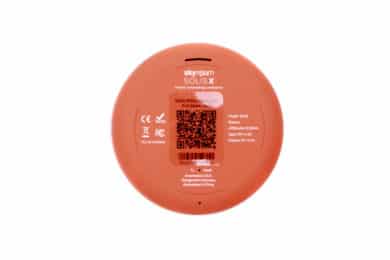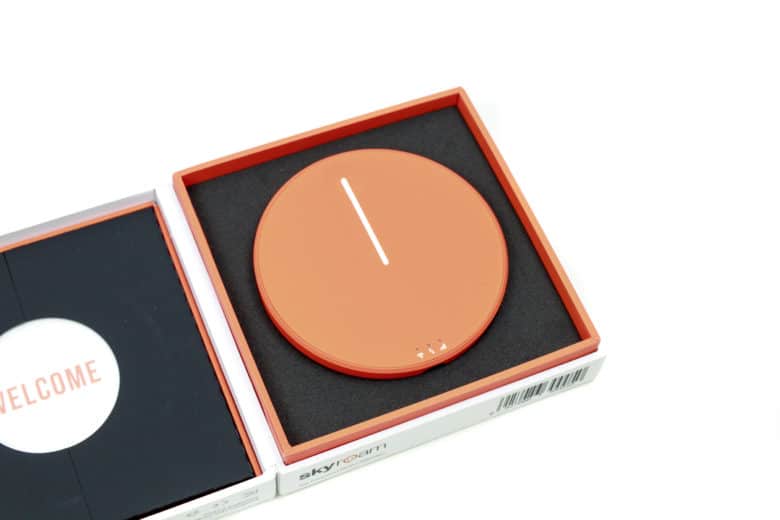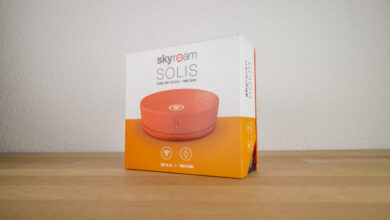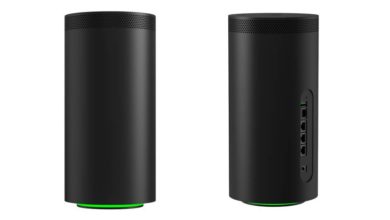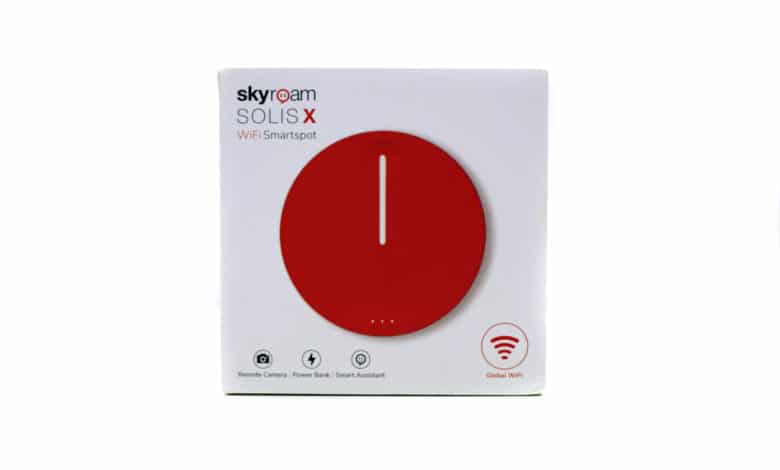
Today, without the Internet, we are lost after a very short time. We use it not only to stay in contact with other people, but also to get information, to be guided through foreign cities or to work. While we can usually rely on a reliable router at home and, in familiar surroundings, on the mobile network, we have to take precautions at the latest when travelling to far-away countries – if there is mobile network access, it is usually incredibly expensive to use. We could now buy a separate SIM card for each country we travel to, to get around this problem. Alternatively, we could save ourselves this effort and instead pack the Solis X from Skyroam. It should guarantee cheap internet access at almost any place at almost any time without much effort. What the device can do and if it is worth buying, you can find out in our test report.
Scope of delivery
In addition to the device itself, there are various instructions, a USB-C charging cable and a USB-C to A adapter.
Design and Workmanship
First of all, it should be noted that it is hardly possible to overlook the device once and accidentally leave it in the hotel room. The Solis X presents itself as a bright orange puck and thus attracts relatively impressive attention. The device is made of stable plastic. The diameter is 8.8 centimetres, it is 2.3 centimetres high and weighs 168 grams. This means it fits well into a jacket pocket and is suitable for a trip in terms of both size and material.
Setup, app and prices
Before the device can be used, the battery should be charged. Then install the manufacturer’s setup app. It is available free of charge for both iOS and Android. The app can be used to connect the smartphone to the hotspot. When the connection was established, the first surprise was immediately apparent: the device emits an unexpectedly loud tone, which at first makes you feel frightened. The sound is also heard when the device is switched off. Unfortunately, it can only be controlled via the app and not directly on the device.
To establish the connection, a QR code attached to the bottom of the hotspot must be scanned with the mobile phone camera. Once the connection is established, numerous settings can be made. For example, payment data can now be stored. A dropbox connection can also be set up to store photos and videos taken with the hotspot – alternatively, a 4 GB internal memory is available for this.
At this point we would also like to comment on pricing: In addition to the one-time fee for the device, there are fees for Internet access. The respective offers can be booked directly in the app. There is a fixed price of 8 euros per gigabyte of data volume, a daily flat rate and a monthly flat rate for 80 euros. These prices are quite fair considering that they apply worldwide. Up to ten devices can be connected so that several people can share a hotspot with a flat rate.
However, there is a catch: the price of the flat rate should apply regardless of the data volume used. At the same time, however, there is a so-called fair-use rule, which is so unclearly formulated that it could also be used to justify massive restrictions in usability: as soon as a certain data consumption is reached, it should be possible to reduce the surfing speed. As soon as a certain data consumption is reached, it should be possible to reduce the surfing speed. In principle, it is also possible to cap the surfing speed to an absolute minimum speed after ridiculously low data consumption. Although it can be assumed that Skyroam will not proceed in this way, as this would probably trigger a storm of indignation, this does not alter the fact that Skyroam is contractually entitled to this right due to the unclear wording when the monthly flat rate is booked. This, in turn, is an enormous factor of uncertainty for users.
Functionality
The device automatically dials into the respective mobile network. Internet-enabled devices can be connected to it in various ways. They can then be used to access the Internet via the respective mobile phone network. In our test, the connection setup worked without any problems. The speed was always in the mid double-digit Mbit/s range, which is roughly equivalent to the surfing speed with an average SIM card for an average connection. Overall, Skyroam’s hotspot does exactly what it promises to do. Even connecting several devices at the same time worked without any problems in our test.
Extras: Camera and Powerbank
The Solis X also offers some extra functions. For example, it is equipped with a camera, can establish Bluetooth connections and should be able to serve as a power bank for other devices. These extra functions have unfortunately disappointed us. The only eight megapixel camera is inferior to almost every smartphone camera. The only advantage is that it can also be triggered remotely via app, making it relatively easy to take group photos. In everyday travel, however, it is quite superfluous. The hotspot’s power bank functionality is definitely useful – unfortunately, it can only be used for a halfway acceptable period of time if the device isn’t used as a hotspot at the same time. If both functions are used at the same time, the battery is emptied in no time. It is therefore much more sensible to use a separate power bank when traveling. Otherwise it is simply not possible to access the internet during the charging process or even after the charging has been involuntarily terminated prematurely, as the hotspot then has to be charged again.
In short: the additional functions could have been dispensed with. They offer hardly any usable advantages and drive up the price of the device. We therefore found the simple Solis without a camera better.
Conclusion
Overall, the Solis X could not convince us. It is overpriced and loaded with superfluous and hardly usable additional functions. Unfortunately, this strongly distracts from the fact that in its main function as a hotspot, it does serve quite well. The device’s performance is also clouded by the opaque flat rate conditions. Those who need a strong and inexpensive hotspot for travelling abroad should rather go for the Solis Lite, which gets by without all the extras of the Solis X and is much cheaper. Here the strong main function is clearly in the foreground and is not clouded by a bad price-performance ratio and hardly usable extras. However, the opaque tariff conditions must also be accepted for the Lite version.
It should also be noted that the device is actually only worthwhile for business people who regularly travel in different countries. Otherwise, it is much cheaper to buy a SIM card locally. Especially in countries with a strong tourism industry this is usually possible without any problems and there are special tourist contracts that automatically end with the expiry of the visa.
Skyroam Solis X
Design and workmanship
Setup and hotspot
Other functions
Value for money
The Solis X is unfortunately not worth its price. The Solis Lite is a much cheaper alternative that offers the same main function.



